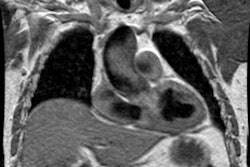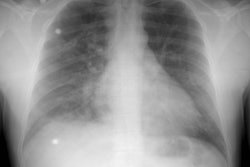Pericardial thickening or effusion in patients with pulmonary artery hypertension: a CT study.
Baque-Juston MC, Wells AU, Hansell DM
OBJECTIVE: The aim of the study was to determine the prevalence of pericardial thickening or effusion revealed by CT in patients with pulmonary artery hypertension. MATERIALS AND METHODS: Forty-five patients underwent pulmonary artery catheterization and CT of the thorax. On CT, we measured the maximum pericardial thickness, total pericardial score (the sum of four measures of pericardial thickness), and thickness of the anterior pericardial recess. Patients were grouped according to mean pulmonary artery pressure: group 1, less than 21 mm Hg (n = 15); group 2, 21-35 mm Hg (n = 15); and group 3, greater than 35 mm Hg (n = 15). RESULTS: The prevalence of an increased pericardial score and increased maximum pericardial thickening was higher in group 3 than in group 1 or group 2 (p = .02 and < .001, respectively). Anterior pericardial recess thickening was markedly increased in group 3 (p < .0001). For all patients, significant correlations (Spearman's rank correlation coefficient = .44-.56, p < .005-.0001) were found between mean pulmonary artery pressure and all pericardial measures. CONCLUSION: On CT, pericardial thickening or effusion is a frequent finding in patients with severe pulmonary hypertension.






